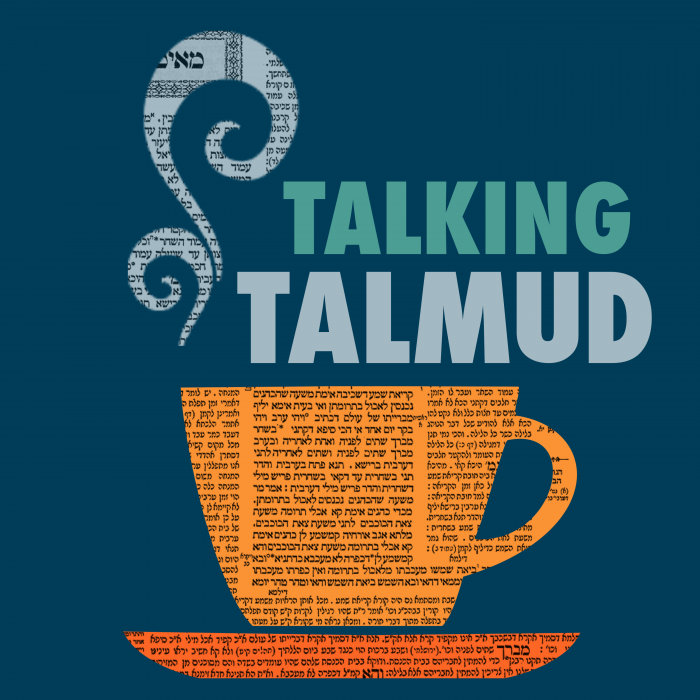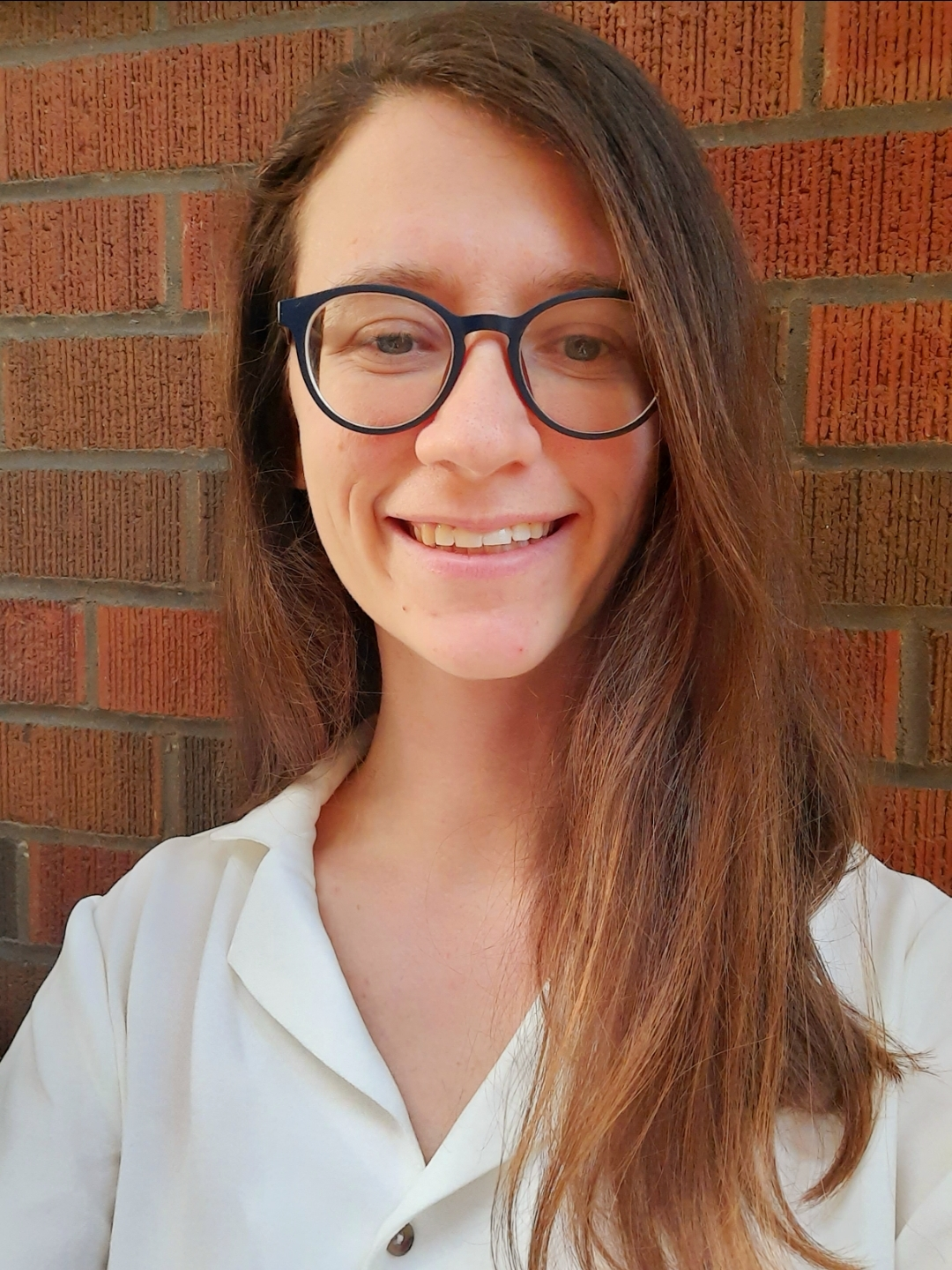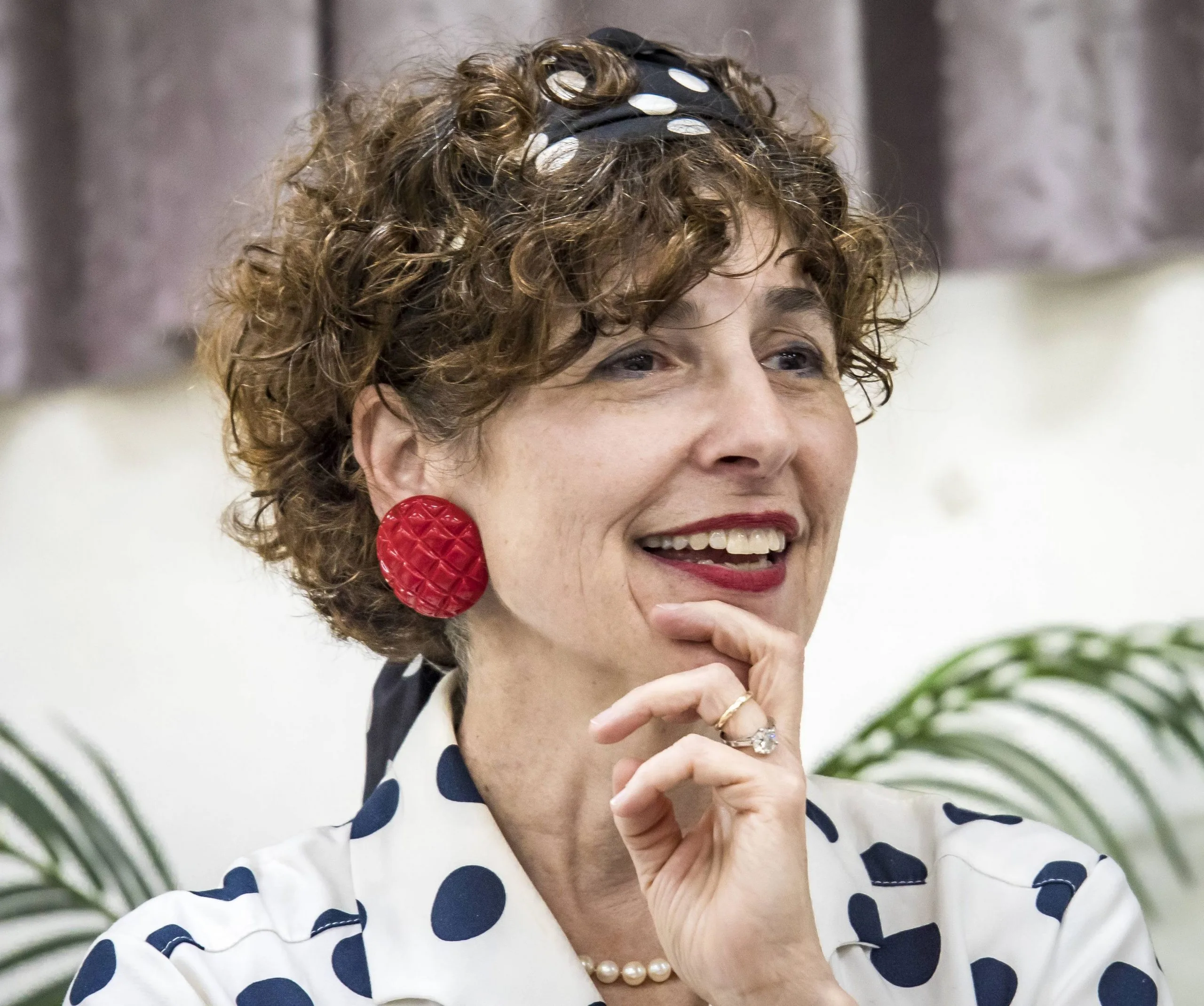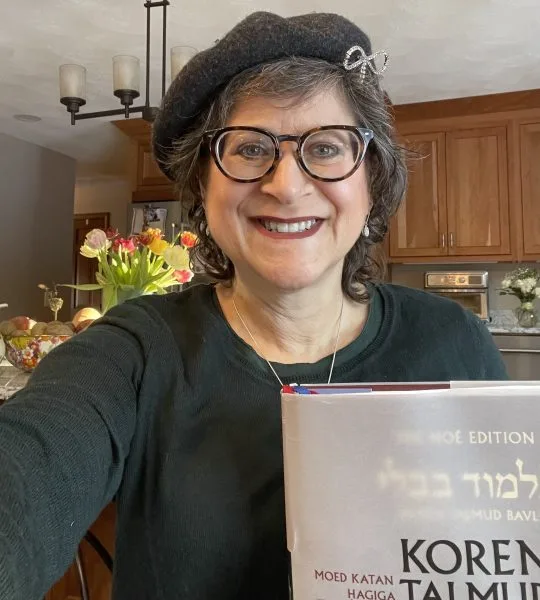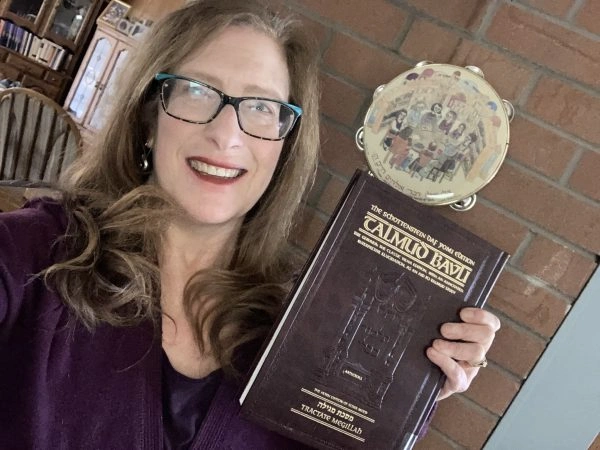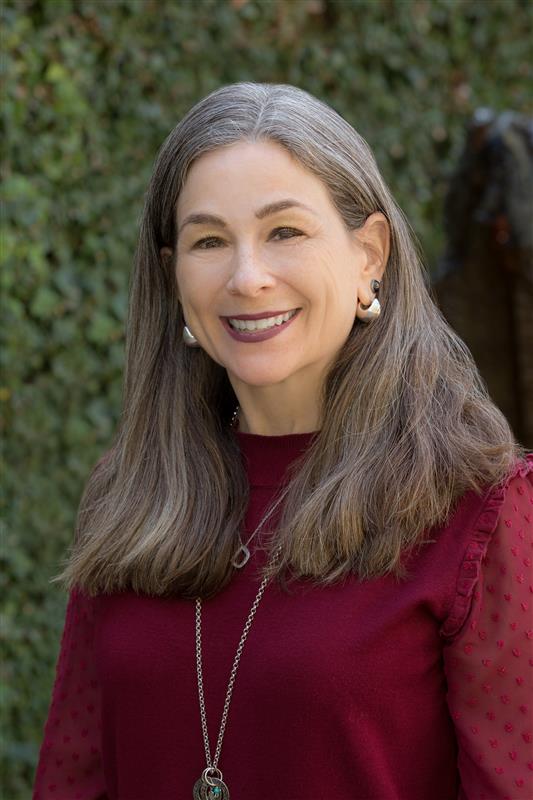Bava Batra 165
אֶלָּא אֲבַק לָשׁוֹן הָרַע.
The Gemara answers: Rather, Rav was referring to uttering a hint, i.e., words with a bare trace, of malicious speech.
אָמַר רַב יְהוּדָה אָמַר רַב: רוֹב בְּגָזֵל, וּמִיעוּט בַּעֲרָיוֹת, וְהַכֹּל בְּלָשׁוֹן הָרָע. בְּלָשׁוֹן הָרָע סָלְקָא דַּעְתָּךְ?! אֶלָּא אֲבַק לָשׁוֹן הָרָע.
Rav Yehuda says that Rav says: The majority of people succumb to sin with regard to robbery, and a minority of people succumb to sin with regard to sexual matters, and everyone succumbs to sin with regard to malicious speech. The Gemara asks: Can it enter your mind that all people sin with regard to malicious speech? The Gemara answers: Rather, Rav was referring to uttering a hint of malicious speech.
רַבָּן שִׁמְעוֹן בֶּן גַּמְלִיאֵל אוֹמֵר: הַכֹּל כְּמִנְהַג הַמְּדִינָה. וְתַנָּא קַמָּא לֵית לֵיהּ מִנְהַג מְדִינָה?
§ The mishna teaches, with regard to documents, that Rabban Shimon ben Gamliel says: Everything is in accordance with regional custom. The Gemara wonders: And does the first tanna not accept that one should follow the regional custom? It is not reasonable that he would take issue with such a basic concept.
אָמַר רַב אָשֵׁי: בְּאַתְרָא דִּנְהִיגִי פָּשׁוּט, וַאֲמַר לֵיהּ: ״עֲבֵיד לִי פָּשׁוּט״, וַאֲזַל עֲבַד לֵיהּ מְקוּשָּׁר – קְפֵידָא. נְהִיגִי מְקוּשָּׁר, וַאֲמַר לֵיהּ: ״עֲבֵיד לִי מְקוּשָּׁר״, וַאֲזַל עֲבַד לֵיהּ פָּשׁוּט – קְפֵידָא.
Rav Ashi said in explanation: In a place where the custom is to write an ordinary document, and one said to a scribe: Make an ordinary document for me, and the scribe went and made a tied document for him, it is assumed that he was particular about wanting an ordinary document. Similarly, in a place where the custom is to write a tied document, and one said to a scribe: Make a tied document for me, and the scribe went and made an ordinary document for him, it is assumed that he was particular about wanting a tied document. In both of these cases, the document is considered to have been written without the consent of the one who requested it. If it is a bill of divorce it may not be used, as a bill of divorce must be written with the knowledge and consent of the husband.
כִּי פְּלִיגִי – בְּאַתְרָא דִּנְהִיגִי בְּפָשׁוּט וּמְקוּשָּׁר, וַאֲמַר לֵיהּ: ״עֲבֵיד לִי פָּשׁוּט״, וַאֲזַל עֲבַד לֵיהּ מְקוּשָּׁר; מָר סָבַר: קְפֵידָא, וּמָר סָבַר: מַרְאֶה מָקוֹם הוּא לוֹ.
When the tanna’im of the mishna disagree is in a place where the custom is to write both an ordinary document and a tied document, and one said to a scribe: Make an ordinary document for me, and the scribe went and made a tied document for him. In such a case, one Sage, the first tanna, holds that the one requesting the document was particular about wanting an ordinary document, and since the scribe wrote a tied document, it is considered to have been written without his consent. And one Sage, Rabban Shimon ben Gamliel, holds that the one requesting the document was merely indicating his position to the scribe, stating that if the scribe wanted to save himself the trouble of writing a tied document there would no objection.
אָמַר אַבָּיֵי: רַבָּן שִׁמְעוֹן בֶּן גַּמְלִיאֵל וְרַבִּי שִׁמְעוֹן וְרַבִּי אֶלְעָזָר – כּוּלְּהוּ סְבִירָא לְהוּ: מַרְאֶה מָקוֹם הוּא לוֹ.
Abaye said: Concerning Rabban Shimon ben Gamliel, and Rabbi Shimon, and Rabbi Elazar, they all hold that when one gives instructions to an agent, he is merely indicating his position to him, as opposed to expressing an insistence on certain details.
רַבָּן שִׁמְעוֹן בֶּן גַּמְלִיאֵל – הָא דַּאֲמַרַן. רַבִּי שִׁמְעוֹן – דִּתְנַן,
Rabban Shimon ben Gamliel holds this is the case, as we have just said. Rabbi Shimon holds this as well, as we learned in a mishna (Kiddushin 48a), as explained by the Gemara there, that the first tanna rules that if a woman appoints an agent to accept her betrothal money and tells him that the man will be giving a golden dinar, or that he will be giving a silver dinar, and he in fact gives the other type of dinar, the betrothal is not valid, as in accepting the wrong dinar the agent did not follow the woman’s instructions exactly.
רַבִּי שִׁמְעוֹן אוֹמֵר: אִם הִטְעָהּ לְשֶׁבַח, הֲרֵי זוֹ מְקוּדֶּשֶׁת.
But Rabbi Shimon says: If he misled her to her advantage, i.e., he told her he was going to give a silver dinar and gave her a golden dinar, she is betrothed. When the woman told the agent to receive the silver dinar she did not mean to insist that the dinar be silver as opposed to gold, but was only indicating her position, which is that she would have no objection to receiving only a silver dinar.
רַבִּי אֶלְעָזָר – דִּתְנַן, הָאִשָּׁה שֶׁאָמְרָה: ״הִתְקַבֵּל לִי גִּיטִּי מִמָּקוֹם פְּלוֹנִי״, וְקִיבְּלוֹ לָהּ מִמָּקוֹם אַחֵר – פָּסוּל; וְרַבִּי אֶלְעָזָר מַכְשִׁיר. מָר סָבַר: קְפֵידָא, וּמָר סָבַר: מַרְאֶה מָקוֹם הוּא לוֹ.
Abaye continues: Rabbi Elazar also holds this, as we learned in a mishna (Gittin 65a): With regard to the woman who, when designating her agent for receipt of her bill of divorce, said to her agent: Receive my bill of divorce for me in such and such a place, and he received it for her in another place, the divorce is invalid; and Rabbi Elazar deems it valid. One Sage, the first tanna, holds that the woman is particular that her instructions be followed, and one Sage, Rabbi Elazar, holds that she was merely indicating her position to the agent, informing him of where she thought her husband would be.
[פָּשׁוּט שֶׁכָּתוּב בּוֹ עֵד אֶחָד כּוּ׳] בִּשְׁלָמָא מְקוּשָּׁר שֶׁכָּתוּב בּוֹ שְׁנֵי עֵדִים, פָּסוּל – אִיצְטְרִיךְ, סָלְקָא דַּעְתָּךְ אָמֵינָא: הוֹאִיל וּבְעָלְמָא כָּשֵׁר – הָכָא נָמֵי כָּשֵׁר; קָא מַשְׁמַע לַן דְּפָסוּל. אֶלָּא פָּשׁוּט שֶׁכָּתוּב בּוֹ עֵד אֶחָד – פְּשִׁיטָא!
§ The mishna teaches: With regard to an ordinary document in which the signature of a single witness is written, and a tied document in which the signatures of only two witnesses are written, they are both not valid. The Gemara asks: Granted, it was necessary for the mishna to teach that a tied document in which the signatures of only two witnesses are written is not valid, as it might enter your mind to say that since generally a document is valid with two signatures, here too it is valid; therefore, the mishna teaches us that it is in fact not valid. But why was it necessary to state that an ordinary document in which the signature of a single witness is written is not valid; isn’t this obvious?
אָמַר אַבָּיֵי: לָא נִצְרְכָא – דַּאֲפִילּוּ עֵד אֶחָד בִּכְתָב, וְעֵד אֶחָד בְּפֶה.
Abaye said: It is necessary to state this halakha only to teach that even if there is one witness signed on the document in writing and, in addition, one witness testifies orally to the contents of the document, the document is not valid.
אַמֵּימָר אַכְשַׁר בְּעֵד אֶחָד בִּכְתָב וְעֵד אֶחָד עַל פֶּה. אֲמַר לֵיהּ רַב אָשֵׁי לְאַמֵּימָר: וְהָא דְּאַבָּיֵי, מַאי? אֲמַר לֵיהּ: לָא שְׁמִיעַ לִי – כְּלוֹמַר, לָא סְבִירָא לִי.
The Gemara relates: Ameimar deemed a document valid in the case of one witness signed on the document in writing and one witness testifying orally to the contents of the document. Rav Ashi said to Ameimar: And what of that statement of Abaye, which deemed such a document invalid? Ameimar said to him: I did not hear of it, as though to say: I do not hold like it; I disagree with Abaye.
אֶלָּא קַשְׁיָא
Rav Ashi asks: But if you disagree, the difficulty
מַתְנִיתִין!
with the mishna remains: Why does the mishna state that which is obvious, that a document with a single witness’s signature is not valid?
הָא קָא מַשְׁמַע לַן – דִּשְׁנַיִם בִּמְקוּשָּׁר, כְּעֵד אֶחָד בְּפָשׁוּט; מָה הָתָם – פְּסוּלָא דְאוֹרָיְיתָא, אַף הָכָא נָמֵי – פְּסוּלָא דְאוֹרָיְיתָא.
The Gemara answers that the mishna teaches us this: That the case of two witnesses signed on a tied document is similar to the case of one witness signed on an ordinary document: Just as there, in the case of a single witness signed on an ordinary document, the disqualification is by Torah law, so too here, in the case of two witnesses signed on a tied document, the disqualification is by Torah law.
תִּדַּע, דִּשְׁלַחוּ מִתָּם חַבְרַיָּיא לְרַבִּי יִרְמְיָה:
Ameimar added: Know that the signature of one witness on a document and the oral testimony of one person about it can be combined into a single testimony, as the colleagues of the academy sent a question from there, i.e., Eretz Yisrael, to Rabbi Yirmeya seeking clarification of a baraita. The baraita states that the first tanna holds that the testimony of two witnesses to an event can be combined into a single testimony only if both of them witnessed the event together, while Rabbi Yehoshua ben Korḥa holds that the testimony can be combined even if they saw the event one after the other. Furthermore, the first tanna holds that their testimony is accepted only if they both testify together. By contrast, Rabbi Natan holds that the testimony of one witness may be accepted today, and when the other witness comes the next day his testimony may be accepted, and the two testimonies may thereby be combined.
עֵד אֶחָד בִּכְתָב וְעֵד אֶחָד עַל פֶּה, מַהוּ שֶׁיִּצְטָרְפוּ?
The dilemma they posed to Rabbi Yirmeya was this: In the case of a loan for which there is one witness in writing, signed on a promissory note, and one other witness who testifies to the loan orally, what is the halakha with regard to the possibility that the two of them will combine to testify as two witnesses?
אַלִּיבָּא דְּתַנָּא קַמָּא דְּרַבִּי יְהוֹשֻׁעַ בֶּן קׇרְחָה – לָא תִּיבְּעֵי לָךְ, דַּאֲפִילּוּ שְׁנַיִם בִּכְתָב וּשְׁנַיִם עַל פֶּה לָא מִצְטָרְפִי. אֶלָּא כִּי תִּיבְּעֵי לָךְ, אַלִּיבָּא דְּרַבִּי יְהוֹשֻׁעַ בֶּן קׇרְחָה – שְׁנַיִם בִּכְתָב וּשְׁנַיִם עַל פֶּה הוּא דְּמִצְטָרְפִי, אֲבָל עֵד אֶחָד בִּכְתָב וְאֶחָד עַל פֶּה לָא מְצָרְפִינַן; אוֹ דִלְמָא לָא שְׁנָא?
The dilemma is clarified: According to the opinion of the first tanna of the baraita, who engages in a dispute with Rabbi Yehoshua ben Korḥa, you should not raise the dilemma, as according to his opinion there are situations where even two testimonies in writing or two oral testimonies are not combined into a single testimony. All the more so they are not combined when one is written and one is oral. Rather, when should you raise the dilemma? Raise it according to the opinion of Rabbi Yehoshua ben Korḥa. The dilemma is: Is it only testimonies of two witnesses in writing or two oral witnesses that are combined into a single testimony, but we do not combine testimony of one witness in writing and one orally? Or perhaps there is no difference between these cases.
שְׁלַח לְהוּ: אֲנִי אֵינִי כְּדַיי שֶׁשְּׁלַחְתֶּם לִי, אֶלָּא כָּךְ דַּעַת תַּלְמִידְכֶם נוֹטָה – שֶׁיִּצְטָרְפוּ.
Rabbi Yirmeya humbly sent back his response to the colleagues of the academy: I am not worthy of being the recipient of the query that you sent to me. But this is how the opinion of your student, i.e., himself, leans: That the testimonies should be combined. This exchange between Rabbi Yirmeya and his questioners indicates that Ameimar’s opinion is accepted.
אֲמַר לֵיהּ: אֲנַן הָכִי מַתְנֵינַן לָהּ – דִּשְׁלַחוּ לֵיהּ חַבְרַיָּיא לְרַבִּי יִרְמְיָה: שְׁנַיִם שֶׁהֵעִידוּ – אֶחָד בְּבֵית דִּין זֶה, וְאֶחָד בְּבֵית דִּין זֶה; מַהוּ שֶׁיָּבוֹאוּ בֵּית דִּין אֵצֶל בֵּית דִּין, וְיִצְטָרְפוּ?
Rav Ashi said to Ameimar: We teach this entire incident with Rabbi Yirmeya differently, as follows: That the colleagues of the academy sent this question to Rabbi Yirmeya: If there are two witnesses who testified, one in this court and one in that court, what is the halakha with regard to the possibility that the judges of one court could come to the other court and in this manner the two testimonies will be combined to become a valid testimony of two witnesses?
אַלִּיבָּא דְּתַנָּא קַמָּא דְּרַבִּי נָתָן לָא תִּיבְּעֵי לָךְ – דַּאֲפִילּוּ בְּחַד בֵּית דִּינָא נָמֵי לָא מִצְטָרְפִי; אֶלָּא כִּי תִּיבְּעֵי לָךְ אַלִּיבָּא דְּרַבִּי נָתָן – בְּחַד בֵּי דִינָא הוּא דְּמִצְטָרְפִי, אֲבָל בִּתְרֵי בֵּי דִינָא לָא מִצְטָרְפִי; אוֹ דִלְמָא לָא שְׁנָא?
The dilemma is clarified: According to the opinion of the first tanna of the baraita, who also engages in a dispute with Rabbi Natan, you should not raise the dilemma, as according to his opinion, testimonies that are not given concurrently are not combined even in one court; all the more so when they are given in two different courts. Rather, when should you raise the dilemma? Raise it according to the opinion of Rabbi Natan. The dilemma is: Is it in one court that the two separate testimonies are combined, but when they are given in two separate courts they are not combined? Or perhaps there is no difference.
וּשְׁלַח לְהוּ: אֲנִי – אֵינִי כְּדַיי שֶׁאַתֶּם שְׁלַחְתֶּם לִי, אֶלָּא כָּךְ דַּעַת תַּלְמִידְכֶם נוֹטֶה – שֶׁיִּצְטָרְפוּ.
And Rabbi Yirmeya sent back his response to them: I am not worthy of being the recipient of the query that you sent to me. But this is how the opinion of your student leans: That they should be combined. According to this version of the exchange between Rabbi Yirmeya and his questioners there is no relevance to Ameimar’s statement.
מָר בַּר חִיָּיא אָמַר, הָכִי שְׁלַחוּ לֵיהּ: שְׁנַיִם שֶׁהֵעִידוּ בְּבֵית דִּין זֶה, וְחָזְרוּ וְהֵעִידוּ בְּבֵית דִּין זֶה – מַהוּ שֶׁיָּבוֹא אֶחָד מִכׇּל בֵּית דִּין וְיִצְטָרְפוּ?
Mar bar Ḥiyya said yet a third version, that the dilemma the colleagues of the academy sent to Rabbi Yirmeya is as follows: If there are two witnesses who testified in this court and then testified in that court, what is the halakha with regard to the possibility that one judge would come from each court to one location and relate the testimony he had heard to the other, and in this manner the two testimonies will be combined?
אַלִּיבָּא דְּרַבִּי נָתָן לָא תִּיבְּעֵי לָךְ – הַשְׁתָּא עֵדִים מְצָרְפִינַן, דַּיָּינֵי מִיבַּעְיָא? אֶלָּא כִּי תִּיבְּעֵי לָךְ, אַלִּיבָּא דְּתַנָּא קַמָּא דְּרַבִּי נָתָן – עֵדִים הוּא דְּלָא מְצָרְפִינַן, אֲבָל דַּיָּינֵי מְצָרְפִינַן; אוֹ דִלְמָא לָא שְׁנָא?
The dilemma is clarified: According to the opinion of Rabbi Natan you should not raise the dilemma. Now that he maintains that we combine two individual witnesses, is it necessary to ask if judges may be combined in this manner? They certainly can be combined. Rather, when should you raise the dilemma? Raise it according to the opinion of the first tanna of the baraita, who engages in a dispute with Rabbi Natan. The dilemma is: Is it only testimony of witnesses that we do not combine into a single testimony, but we do combine judges from two different courts? Or perhaps there is no difference.
שְׁלַח לְהוּ: אֲנִי – אֵינִי כְּדַיי שֶׁאַתֶּם שְׁלַחְתֶּם לִי, אֶלָּא כָּךְ דַּעַת תַּלְמִידְכֶם נוֹטֶה – שֶׁיִּצְטָרְפוּ.
Rabbi Yirmeya sent back his response to them: I am not worthy of being the recipient of the query that you sent to me. But this is how the opinion of your student leans: That they should be combined.
רָבִינָא אָמַר, הָכִי שְׁלַחוּ לֵיהּ: שְׁלֹשָׁה שֶׁיָּשְׁבוּ לְקַיֵּים אֶת הַשְּׁטָר, וּמֵת אֶחָד מֵהֶן; צְרִיכִי לְמִכְתַּב ״בְּמוֹתָב תְּלָתָא הֲוֵינָא, וְחַד לֵיתוֹהִי״, אוֹ לָא?
Ravina said a fourth version, that the dilemma the colleagues of the academy sent to Rabbi Yirmeya is as follows: If there were three judges who sat as a court to ratify a document, and, after verifying the signatures of the witnesses, one of the judges died, must they mention this in their statement of ratification, to account for why the declaration is signed by only two judges, and write: We were sitting in a group of three judges, and one of the judges is no longer alive? Or perhaps they are not required to write this.
שְׁלַח לְהוּ: אֲנִי – אֵינִי כְּדַיי שֶׁאַתֶּם שְׁלַחְתֶּם לִי, אֶלָּא כָּךְ דַּעַת תַּלְמִידְכֶם נוֹטֶה – שֶׁצְּרִיכִין לְמִכְתַּב: ״בְּמוֹתַב תְּלָתָא הֲוֵינָא, וְחַד לֵיתוֹהִי״.
Rabbi Yirmeya sent back his response to them: I am not worthy of being the recipient of the query that you sent to me. But this is how the opinion of your student leans: That they are required to write: We were sitting in a group of three judges, and one of the judges is no longer alive.
וְעַל דָּא עַיְּילוּהוּ לְרַבִּי יִרְמְיָה בְּבֵי מִדְרְשָׁא.
The Gemara relates: And it was because of this fitting answer, to whichever version of the dilemma that is adopted, that the Sages brought Rabbi Yirmeya into the study hall after he had been expelled, as related earlier in this tractate (23b).
מַתְנִי׳ כָּתוּב בּוֹ: ״זוּזִין מְאָה, דְּאִינּוּן סִלְעִין עֶשְׂרִין״ – אֵין לוֹ אֶלָּא עֶשְׂרִין. ״זוּזִין מְאָה, דְּאִינּוּן תְּלָתִין סִלְעִין״ – אֵין לוֹ אֶלָּא מָנֶה.
MISHNA: If it is written in a document that someone owes: One hundred dinars, which are twenty sela, which is internally inconsistent since there are twenty-five sela in a hundred dinars, the holder of the document has the right to claim only twenty sela, the lower of the two amounts. If it is written that he owes: One hundred dinars, which are thirty sela, the holder of the document has the right to claim only one hundred dinars, again the lower of the two amounts.
״כְּסַף זוּזִין דְּאִינּוּן״, וְנִמְחַק – אֵין פָּחוֹת מִשְּׁתַּיִם. ״כְּסַף סִלְעִין דְּאִינּוּן״, וְנִמְחַק – אֵין פָּחוֹת מִשְּׁתַּיִם. ״דַּרְכּוֹנוֹת דְּאִינּוּן״, וְנִמְחַק – אֵין פָּחוֹת מִשְּׁתַּיִם.
If it is written that someone owes: Silver dinars that are, and the remainder of the text, where the number of dinars should be specified, was erased, the amount must be no less than two dinars, the lowest amount to which the plural word dinars can be referring. That is what the creditor can claim. Similarly, if it is written: Silver sela that are, and the remainder of the text was erased, the amount must be no less than two sela. And if it is written: Darics that are, and the remainder of the text was erased, the amount must be no less than two darics.
כָּתוּב בּוֹ מִלְּמַעְלָה מָנֶה וּמִלְּמַטָּה מָאתַיִם; מִלְּמַעְלָה מָאתַיִם וּמִלְּמַטָּה מָנֶה – הַכֹּל הוֹלֵךְ אַחַר הַתַּחְתּוֹן. אִם כֵּן, לָמָה כּוֹתְבִין אֶת הָעֶלְיוֹן? שֶׁאִם תִּמָּחֵק אוֹת אַחַת מִן הַתַּחְתּוֹן – יִלְמַד מִן הָעֶלְיוֹן.
If it is written in the document above, in an earlier place in the document, that someone owes one hundred dinars, and below, toward the end of the document, it is written that the amount owed is two hundred dinars, or if above it is written two hundred dinars and below one hundred dinars, everything follows the bottom amount. If so, why does one write the information in the upper part of the document at all? It is a safety measure, so that if one letter is erased from the lower part of the document, thereby rendering it illegible, the information can be learned from the upper part of the document.
גְּמָ׳ תָּנוּ רַבָּנַן: אָמַר ״כֶּסֶף״ – אֵין פָּחוֹת מִדִּינָר כֶּסֶף. ״כֶּסֶף דִּינָרִין״ וְ״דִינָרִין כֶּסֶף״ – אֵין פָּחוֹת מִשְּׁנֵי דִּינָרִין כֶּסֶף. ״כֶּסֶף בְּדִינָרִין״ – אֵין פָּחוֹת מִבִּשְׁנֵי דִינָרִין דְּהַב, כֶּסֶף.
GEMARA: The Sages taught (Tosefta 11:2): If a document states that someone owes silver, without specifying which silver coin, the amount must be no less than a silver dinar. If it states: Silver dinars, or: Dinars silver, the amount must be no less than two silver dinars, the lowest amount to which that phrase can refer. If it states: Silver, in dinars, the amount must be no less than two golden dinars’ worth of silver.
אָמַר מָר: ״כֶּסֶף״ – אֵין פָּחוֹת מִדִּינָר כֶּסֶף. וְאֵימָא נְסָכָא! אָמַר רַבִּי אֶלְעָזָר: דְּכָתוּב בֵּיהּ ״מַטְבֵּעַ״. וְאֵימָא פְּרִיטֵי! אָמַר רַב פָּפָּא: בְּאַתְרָא דְּלָא סָגֵי פְּרִיטֵי דְכַסְפָּא.
The Gemara analyzes the beginning of the baraita. The Master says: If a document states that someone owes silver, without specifying which silver coin, the amount must be no less than a silver dinar. The Gemara asks: But why not say that the intention of the word silver is not to a coin at all, but to a small piece of silver? Rabbi Elazar said: The case of the baraita is where the word coin is written in the document. The Gemara asks further: But why not say that the intent is not a dinar, but smaller coins, such as perutot? Rav Pappa said: The halakha of the baraita is stated with regard to a place where silver perutot do not circulate.
תָּנוּ רַבָּנַן: ״דְּהַב״ – אֵין פָּחוֹת מִדִּינָר דְּהַב. ״דְּהַב דִּינָרִין״ וְ״דִינָרִין דְּהַב״ – אֵין פָּחוֹת מִשְּׁנֵי דִינָרִין דְּהַב. ״דְּהַב בְּדִינָרִין״ – אֵין פָּחוֹת מִבִּשְׁנֵי דִינָרִין כֶּסֶף, דְּהַב.
The Sages taught in the continuation of the baraita: If it is written in a document that someone owes gold, the amount must be no less than a golden dinar. If it is written: Golden dinars, or: Dinars golden, the amount must be no less than two golden dinars. If it is written: Gold, in dinars, the amount must be no less than two silver dinars’ worth of gold.
אָמַר מָר: ״דְּהַב״ – אֵין פָּחוֹת מִדִּינָר דְּהַב. אֵימָא נְסָכָא! אָמַר רַבִּי אֶלְעָזָר: דִּכְתַב ״מַטְבֵּעַ״.
The Gemara analyzes the beginning of this section of the baraita. The Master says: If it is written in a document that someone owes gold, the amount must be no less than a golden dinar. The Gemara asks: But why not say that the intention of the word gold is not to a coin at all, but to a small piece of gold? Rabbi Elazar said: The case of the baraita is where the word coin is written in the document.



